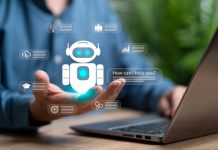Recent headlines pointing to artificial intelligence (AI) as a key factor in the layoffs of tens of thousands have made employees across the nation anxious. Executives at companies like Amazon, IBM, Microsoft, Salesforce and UPS cite either productivity improvements from AI or their growing investments in this innovative technology as contributing to their reductions in force. This simply adds to concerns and suspicions employees have already been voicing about AI.
- A 2025 Gallup survey demonstrates how distrustful and apprehensive American workers are of AI:
- Three in four Americans believe AI will reduce the total number of jobs in the U.S. in the next 10 years.
- Only 10% believe AI will do more good than harm.
- Fully 80% do not trust businesses will use AI responsibly.
The Human Element Will Always Be Vital
U.S. companies are increasing investments in Generative AI. The total expenditure has grown 94% this year to $61.9 billion according to IDC, a technology research firm. But organizations must remember investing in technology alone will not get the results needed to justify those investments. Any large shift in technology – from the assembly line to factory automation to the computer revolution – required the input, training, testing, tweaking and ultimately adoption by the workforce to succeed.
AI offers enormous potential. It is extraordinary at analyzing huge data sets for specific and often narrow tasks. Chatbots can quickly track orders and answer common questions. AI can automate processes and manage them faster than a person possibly could. But it lacks the human ability to reason, adapt or understand the world in a truly general way. This makes it challenging for AI to creatively think outside the box or to reimage the context of a situation. It also lacks the emotional intelligence and experiences a person gains over time.
Leadership must remember humans are essential to the success of AI. Employee buy-in is aways crucial for any new process or technology. When employees adopt new technology, they inevitably adapt it to their specific needs and to their specific business. Helping employees embrace AI is no different than setting them up for success in anything.
First, offer a clear and transparent vision of success. Explain what it will mean to the organization and the employees to leverage AI. Illustrate how it benefits everyone to create a shared purpose.
Build a human-centric culture to support success. Demonstrate how AI builds new opportunities for employees. Help them understand how it can help them save time with rote tasks and offer more chances to innovate and grow.
Provide AI training. Define the skills and behaviors essential to using AI responsibly and ethically. Offer resources to help them test and innovate.
Showcase success stories and recognize employees who contributed publicly.
This is nothing new. Managers must always work to create employee engagement and buy-in to any big changes in their organization. What may separate AI from other undertakings is the speed with which companies are rushing toward it. The fear of being outpaced by competitors or of being left behind entirely is driving many to shift big dollars into this promising technology.
Taking time to think through the human connections with AI and considering how to position it with employees will pay huge dividends. When people understand any change and are on board, innovations follow, implementations are smoother, and the ROI from those big investments come much faster.
Want to know more? Check out these articles.
“Three in Four Americans Believe AI Will Reduce Jobs,” Gallup, September 12, 2025.
Request a summary of the Forrester Report, “Ground Your Workforce AI Strategy in Human Experience.”
“Making AI Work: Leadership, Lab, and Crowd,” Ethan Mollick, May 22, 2025





